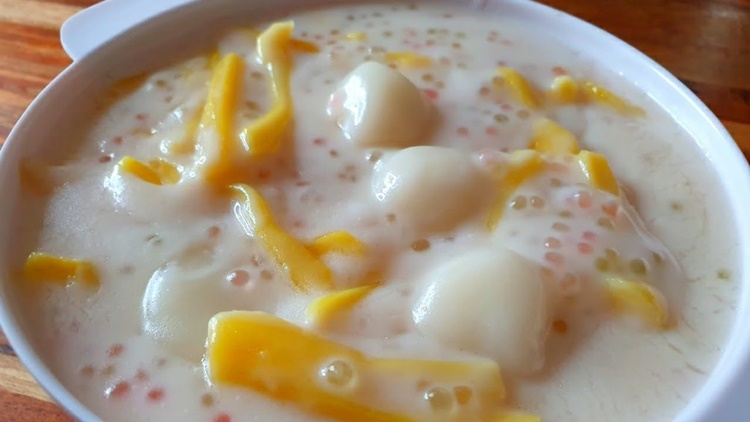BILO-BILO – Here is the history and some lesser-known facts about this delicious Filipino dessert made of small glutinous balls.
Bilo-Bilo is a cherished Filipino dessert featuring small, chewy rice balls simmered in a sweet, creamy coconut milk mixture. Known for its comforting texture and rich flavor, this dessert is a favorite across the Philippines.
It is a delightful Filipino treat that combines glutinous rice balls with coconut milk and a variety of other tasty ingredients. This dessert is enjoyed either warm or cold and holds a special place in Filipino culinary traditions.

The main ingredients are glutinous rice flour and water, which are mixed to form small balls. These rice balls are cooked in a rich coconut milk base along with sweeteners like sugar, and often include sago pearls for added chewiness.
Fruits such as jackfruit and tubers like sweet potatoes and taro are common additions, enhancing both the flavor and texture of the dish.

Recipe
- Glutinous rice flour
- Coconut milk
- Sugar (white or brown)
- Sago pearls (regular or mini-sized)
- Optional ingredients like jackfruit, sweet potatoes, and taro
Cooking Procedure
- Cook the Sago Pearls: Start by boiling the sago pearls until they turn translucent and chewy.
- Prepare the Rice Balls: Mix glutinous rice flour with water to form small balls. Boil these balls until they float to the surface.
- Combine Ingredients: Heat coconut milk with sugar until the sugar dissolves. Add the cooked rice balls, sago pearls, and any additional ingredients like sweet potatoes or taro. Simmer until everything is well combined and heated through.
Origin
This dish originated in the Visayas region of the Philippines. The name “Bilo-Bilo” comes from the Visayan word “bilo,” meaning “round,” which describes the shape of the glutinous rice balls used in the dish.
History
This dessert is part of the Filipino culinary tradition known as “kakanin,” which includes various sweet rice-based treats. It has been enjoyed for generations and is often served during special occasions and festivals.
Variations of this delicacy exist across the Philippines, with different regions adding unique ingredients or adjusting the recipe to fit local tastes. Some versions include additional items like pandan leaves or young coconut meat.

